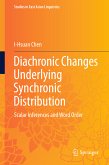This book presents an in-depth fieldwork-based study of the Greek language spoken by immigrants in Cairns, Far North Queensland, Australia. The study analyzes language contact-induced changes and code switching patterns, by integrating perspectives from contact linguistics and interactional approaches to language use and code switching. Lexical and pragmatic borrowing, code mixing, discourse-related and participant-related code switching, and factors promoting language maintenance are among the topics covered in the book. The study brings to light original data from a speech community that has received no attention in the literature and sheds light on the variation of Greek spoken in diaspora. It will appeal across disciplines to scholars and students in linguistics, anthropology, sociology, and migration studies.
Dieser Download kann aus rechtlichen Gründen nur mit Rechnungsadresse in A, B, BG, CY, CZ, D, DK, EW, E, FIN, F, GR, HR, H, IRL, I, LT, L, LR, M, NL, PL, P, R, S, SLO, SK ausgeliefert werden.
Hinweis: Dieser Artikel kann nur an eine deutsche Lieferadresse ausgeliefert werden.
Es gelten unsere Allgemeinen Geschäftsbedingungen: www.buecher.de/agb
Impressum
www.buecher.de ist ein Internetauftritt der buecher.de internetstores GmbH
Geschäftsführung: Monica Sawhney | Roland Kölbl | Günter Hilger
Sitz der Gesellschaft: Batheyer Straße 115 - 117, 58099 Hagen
Postanschrift: Bürgermeister-Wegele-Str. 12, 86167 Augsburg
Amtsgericht Hagen HRB 13257
Steuernummer: 321/5800/1497
USt-IdNr: DE450055826
Bitte wählen Sie Ihr Anliegen aus.
Rechnungen
Retourenschein anfordern
Bestellstatus
Storno









